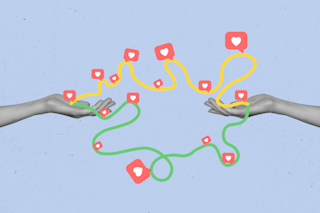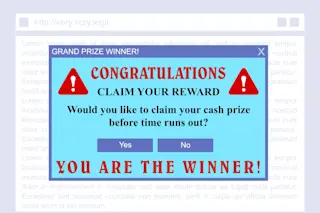From YouTube to Twitter and TikTok, much of our digital diet is dictated by social media algorithms, sets of rules that determine what content you see. The algorithms learn what makes us tick, then give us more and more (and more) of it.
At first glance, this may sound like a convenience.
Why wade through an endless morass of Facebook posts when a handy algorithm can simply present the ones it knows you’ll care about? Don’t we all want perfectly curated sequences of hedgehog memes to fall effortlessly into our laps?
But if you’ve ever come to your senses after hours of mindless scrolling, feeling as though you’ve awoken from a trance, you understand the pernicious side of algorithms. Granted, it’s nearly impossible to exist online without their interference — but you can make it harder for them to hijack your brain.
How Do Algorithms Work?
Helpful as they can be, algorithms don’t ultimately serve consumers. They’re designed to serve the bottom line of social media companies — by holding users’ attention as long as possible.
Every second of viewing equates to so many advertising dollars, the main revenue source for these free platforms. As the saying goes, “If you’re not paying for the product, you are the product.”
Algorithms achieve this by paying close attention. They are relentless students of behavior; each time you retweet or like an Instagram post, for example, their understanding of your preferences grows a little sharper, and they are better able to recommend irresistible content in the future.
“Knowing how the algorithms work can be a source of power,” says psychiatrist Nina Vasan, founder of Brainstorm: The Stanford Lab for Mental Health Innovation.
Read More: Social Media May Be Changing The Way You Communicate
How to Beat Algorithms in Social Media
One strategy for taking control of your social media experience is to forgo those recommendations whenever possible. Algorithms may track every click you make, but clicks on suggested content weigh heaviest because you are confirming their predictions about what you’ll like — strengthening the digital profile they keep on you.
YouTube’s homepage, for example, is filled with suggestions based on your viewing history. That can be useful, of course, but it can also lead you deep down the rabbit hole.
The antidote? Search for what you want, rather than passively yielding to its judgment. Even if something intriguing pops up as a suggestion, try searching for it manually instead.
On some platforms, you can even switch off suggested feeds and revert to the old-fashioned, reverse-chronological order. This isn’t an option on TikTok, but Facebook, Instagram and Twitter all allow you to sort recent posts into this less addictive layout.
In some cases, you can starve algorithms by limiting their access to your information. For example, Vasan notes that erasing your viewing history on YouTube will rid your feed of hyper-targeted material.
You can also unlink your various online accounts, preventing algorithms from seeing your activity across platforms. This means, although convenient, you must resist the urge to use the “Login with Facebook” or “Login with Google” options when opening a new account.
Read More: What Is Smartphone Addiction and Is It Fueling Mental Health Problems?
Be Your Own Social Media Curator
Another option is to use algorithms to your advantage, by deliberately engaging with the kind of content and sources you want more of. In other words, feed the curation machine spinach rather than potato chips, and it will be more likely to offer you a healthy diet in return.
Vasan advises her patients to “find the positive — the things on social media that make them smile, laugh, feel good about themselves — and keep clicking on more of that type of content.”
On certain platforms, including Facebook and Twitter, you can also optimize which people and accounts appear highest (and lowest) on your feed.
And, of course, you can manage what you see online by simply spending less time there. Vasan recommends taking a “media vacation” for a few days or weeks and, depending on your results, extending it.
“If you find yourself feeling better,” she says, “consider cutting down on social media use overall and finding IRL things to do that are similar to the things you found enjoyable online.”
Read More: What Is a Social Media Cleanse?















